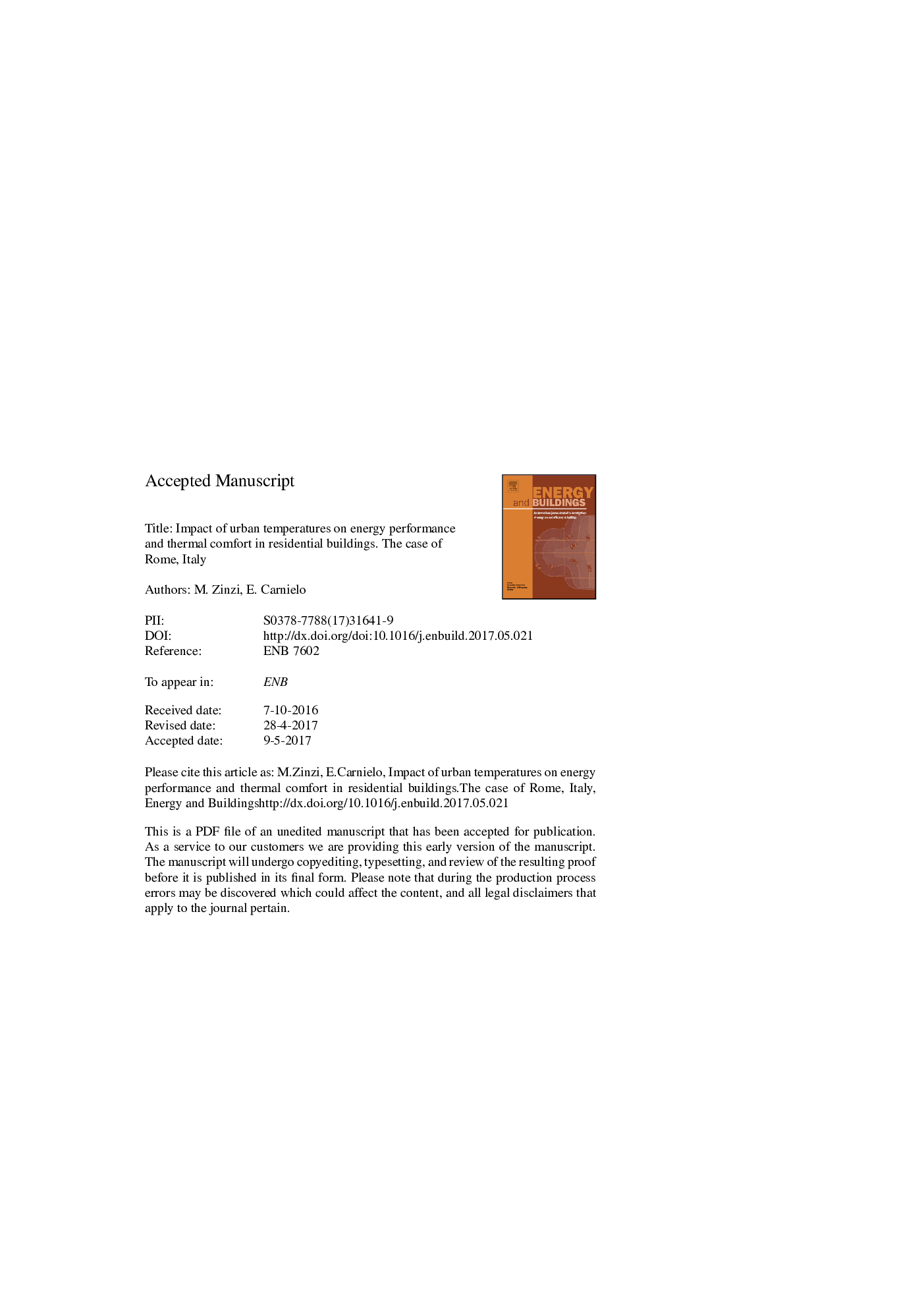| Article ID | Journal | Published Year | Pages | File Type |
|---|---|---|---|---|
| 6729387 | Energy and Buildings | 2017 | 22 Pages |
Abstract
Average air temperatures in the Mediterranean region are in the thermal comfort zone for human beings in summer. However, irradiation conditions, construction technologies and subjective comfort expectations are dramatically increasing the cooling demand in buildings, exacerbated by the ambient temperature increase due to the climate change and the urban heat island phenomenon. This paper investigates the impact of the urban environment on the energy and thermal response of residential buildings, considering the case of the city of Rome, Italy. Ambient air temperature and relative humidity were continuously measured in four neighborhoods in 2015 and 2016. The monitored neighborhoods are characterized by: location in the urban area; construction materials for buildings and pavements; geometry of the urban texture. Data were also measured by a non-urban station, used as undisturbed reference. The climatic data were then used to calculate the thermal response of a typical Italian residential building, ideally located in the monitored areas of the city. Two envelope configurations were taken into account: with and without thermal insulation. Heat island intensities up to 8 °C was detected, with maximum monthly averages equal to 2 °C. The urban heat island increases the building cooling energy needs by 12% in the peripheral neighborhood and by up to 46% in the city center, respect to the undisturbed zone. For not cooled buildings, it was found out that the number of hours of thermal discomfort remains significant in urban buildings, despite the application of night ventilation strategies, while comfort conditions are mostly reached for buildings in the countryside.
Related Topics
Physical Sciences and Engineering
Energy
Renewable Energy, Sustainability and the Environment
Authors
M. Zinzi, E. Carnielo,
